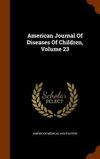Gastroesophageal reflux-induced hypoxemia in infants with apparent life-threatening event(s).
American journal of diseases of children
Pub Date : 1989-08-01
DOI:10.1001/ARCHPEDI.1989.02150200111028
引用次数: 40
Abstract
To evaluate relationships between gastroesophageal reflux (GER) and the development and onset of apparent life-threatening event(s) (ALTE), 16 infants presenting with ALTE and 6 control subjects manifesting clinical GER alone were studied using prolonged, esophageal pH monitoring in conjunction with simultaneous pulse oximetry and transthoracic impedance pneumocardiography. Despite the absence of a clinical vomiting history in 14 of 16 patients with ALTE, the incidence of GER was similar in both groups (patients with ALTE vs control subjects, 95% vs 100%). Significant arterial oxygen desaturation (less than 90% for greater than 3 minutes) was monitored during 60 episodes in 14 of 16 infants with ALTE, compared with no episodes of reduced arterial oxygen saturation in control subjects. Fifty-four of 60 of these desaturation events commenced within 3.9 +/- 0.4 minutes (mean +/- SD) of onset of a drop in esophageal pH to less than 4.0. Linear regression analysis indicates a significant correlation between duration of esophageal acidification and length of individual hypoxemic episodes (r = .39). Pneumocardiograms were normal in all patients. These data suggest that unsuspected GER is common in infants presenting with ALTE and, in these patients, GER may be directly associated with reflex hypoxemic episodes. Prolonged intraesophageal pH monitoring, performed simultaneously with evaluation for apnea, should be considered in all infants presenting with ALTE.有明显危及生命事件的婴儿胃食管反流引起的低氧血症
为了评估胃食管反流(GER)与明显危及生命事件(ALTE)的发生和发展之间的关系,我们对16名表现为ALTE的婴儿和6名单纯表现为临床GER的对照组进行了研究,采用长时间食管pH监测,同时进行脉搏血氧测定和经胸阻抗肺心动图。尽管16例ALTE患者中有14例没有临床呕吐史,但两组患者的GER发生率相似(ALTE患者与对照组,95% vs 100%)。16例ALTE患儿中有14例在60次发作中监测到明显的动脉血氧饱和度降低(低于90%,持续时间大于3分钟),而对照组没有出现动脉血氧饱和度降低。60例去饱和事件中有54例发生在食道pH降至4.0以下的3.9 +/- 0.4分钟内(平均+/- SD)。线性回归分析显示,食管酸化持续时间与个体低氧血症发作时间之间存在显著相关性(r = 0.39)。所有患者的肺心动图均正常。这些数据表明,未预料到的GER在ALTE患儿中很常见,在这些患者中,GER可能与反射性低氧血症发作直接相关。所有ALTE患儿均应考虑延长食管内pH监测时间,并与呼吸暂停评估同时进行。
本文章由计算机程序翻译,如有差异,请以英文原文为准。
求助全文
约1分钟内获得全文
求助全文

 求助内容:
求助内容: 应助结果提醒方式:
应助结果提醒方式:


